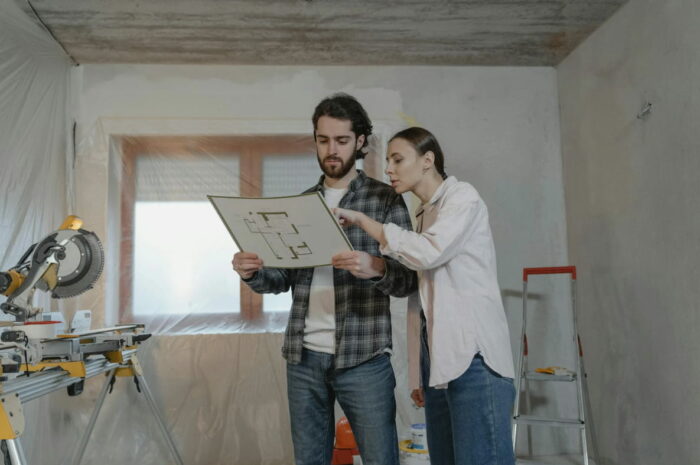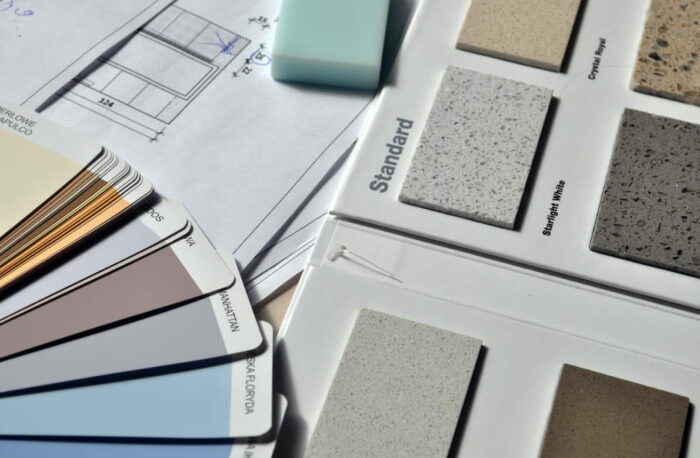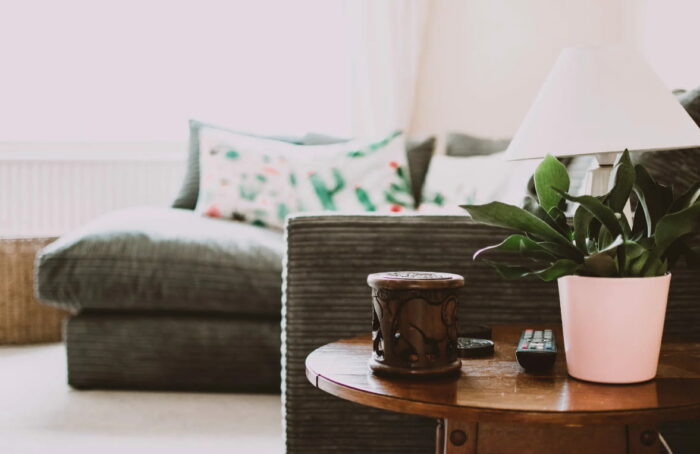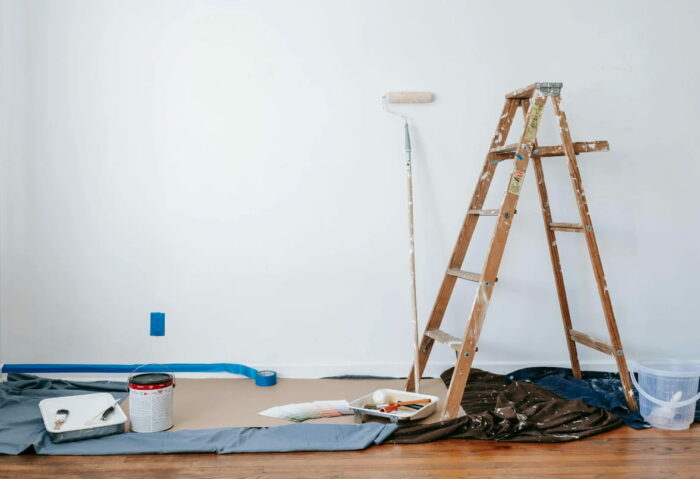If you’ve ever spent too much idle time indoors, you’ve probably noticed areas of your living spaces that could use a bit of a revamp. Not to worry, you’re not alone in feeling this.
Improving your home environment can be as simple as moving furniture around or as complex as a full-scale renovation. By following the right guidelines and keeping an open mind, you can transform your home into a more comfortable, aesthetically pleasing, and functional space.
But where should you start, and what exactly should you consider? We’ve got some key steps you can follow.
Understanding the Basics of Home Improvement
Home improvement isn’t just about flashy renovations or expensive purchases. It’s about making strategic changes that enhance your home’s functionality and aesthetic appeal.
Before you drive to the nearest hardware store, let’s review the basics of home improvement. Understanding these fundamentals can significantly enhance your ability to transform your living space effectively and efficiently.
Here are some factors you need to consider:
- Define your goals: What do you want to achieve with this project? Is it to increase storage, improve functionality, enhance aesthetics, or perhaps a combination of these?
- Limit your budget: You don’t want to start a project you can’t afford to finish. Prioritize improvements that add value to your home or significantly improve your living experience.
- Watch your limitations: Some tasks require professional expertise, especially with plumbing, electrical work, and structural alterations that aren’t DIY-friendly. Hiring experienced professionals for these tasks can save you money in the long run.
- Planning is key: Don’t rush into a project without a clear plan. Research, sketch, and estimate costs before you begin to avoid costly mistakes and ensure the project runs smoothly.
Planning Your Spaces

It’s crucial to craft a detailed plan for your space transformation before diving headfirst into a home improvement project. Proper planning prevents costly mistakes, ensures the project stays within budget, and helps you realize your vision for a better living environment.
Start With a Layout
First, sketch out a rough layout of your space, noting down the measurements.
You don’t have to be an artist; just make sure it’s to scale. This sketch will help you visualize the space and plan where to place furniture or fixtures.
Consider Your Budget
Home improvement projects can have different goals. It can be as simple as replacing your coffee mugs or as complex as repairing your home’s structural issues.
When planning your home improvement project, determine how much you are willing to spend on specific parts of your home. This will dictate the kind of materials you’ll use, and the extent of changes you can make.
It’s also smart to set aside a contingency fund for unexpected costs.
Set a Realistic Timeline
Home improvements can be disruptive, so it’s important to know when you’ll be able to enjoy your new space. With proper planning, your dream living environment is within reach.
Monitor your progress regularly to stay on track and make adjustments as necessary. To avoid delay, keep open lines of communication with contractors or service providers and ensure they understand your timeline expectations.
| Trust The Process: Home improvement projects often take longer than initially anticipated, so practice patience and stay focused on the end goal. If you’re feeling lost, don’t hesitate to get a professional second opinion on your project’s feasibility. |
Maximizing Spaces Through Storage Solutions
After setting a solid plan for your home improvement project, it’s time to explore how to maximize your space through smart storage solutions.
Some of the common issues in home improvement projects can be solved through proper space management. One strategy you can use to achieve this is to think vertically.
Incorporating shelves, hooks, and racks on your walls can free up floor area for books, clothes, and other accessories. You can also use the top of your closets and other tall furniture to keep out-of-season items.
Consider multi-purpose furniture such as ottomans, benches, or beds with built-in storage. They’re functional, save space, and provide a two-in-one solution for your storage concerns.
Selecting the Right Color Palette

A room’s palette isn’t just about picking your favorite colors; it’s about understanding how those colors work together and influence the ambiance of a room. Choosing the right color palette can drastically transform your living space, setting the mood and reflecting your personal style.
For example, cool colors like blues and greens evoke calmness and relaxation, perfect for bedrooms or bathrooms. Warm hues such as reds, oranges, and yellows, inspire energy and creativity, making them great choices for living rooms or home offices.
If your furniture has a lot of darker, rich tones, you might opt for a lighter, neutral palette for your walls to balance things out. Always test colors before removing your furniture and fully committing to painting your walls.
To avoid an expensive do-over, paint swatches on your walls and observe how they look at different times of day and under various lighting conditions. You’ll find that colors can appear drastically different in natural versus artificial light.
Adding DIY Projects for a Cozier Home
You can make your home even cozier by tackling a few DIY projects.
These don’t have to take too much from your time and budget. Simple, inexpensive projects can make a huge impact on your space’s warmth and comfort.
For instance, you can install an easy-to-make blanket ladder in your bathroom as a stylish way to display those soft, cozy blankets.
Another great project is installing floating shelves. They’re not only practical for storage but also provide a platform for displaying personal items, adding a touch of personality to your home.
Don’t forget your room’s lighting options. A DIY sconce or a handmade lamp can cast a warm, inviting glow in any room.
Incorporating Nature Into Your Space

Don’t overlook the power of bringing a bit of the outdoors into your living spaces. You can achieve this in several ways
Install Greenery Indoors
Installing houseplants can make your rooms feel brighter while removing air toxins to cultivate a healthier home.
Incorporating nature into your space doesn’t stop at adding a few potted plants; it’s also about creating a balance between your indoor living space and the outdoor world. Start by choosing plants that complement your decor and can thrive indoors.
Succulents, for instance, don’t require much water and can survive in low light conditions. Besides being low maintenance, succulents are also quite trendy and can add a modern touch to your interior.
| Safety Tip: Bringing some greenery indoors can make your home an attractive target for certain pets. Make sure you pest-proof your home by contacting professionals, like pest control experts in Medford, Oregon, to keep your living spaces safe. |
Mix and Match Your Materials
Your choice of materials can also add to your room’s natural aesthetic. Materials like wood, stone, and bamboo can bring a natural touch to your space.
Play around with different combinations of materials for furniture, flooring, or even accent walls to see what fits best in your home.
Set Moods with Scents
Don’t forget the power of scent. Scent can contribute to the overall ambiance of a space, helping to evoke specific atmospheres or themes.
For example, lavender or chamomile scents can promote tranquility in a bedroom or spa-like environment. Each room can have a different scent to complement its function.
Ensuring Psychological Upliftment in Design
Beyond the physical aspects of your home, don’t forget about personal touches. Incorporating elements that resonate with your personal style and comfort can create a living environment that nurtures positivity and reduces stress.
Displaying cherished photos, artwork, or mementos can evoke positive memories and feelings that significantly influence your psychological well-being. Adding these items that reflect your hobbies or interests can make your space feel uniquely yours.
Find What Works for You

Use storage solutions wisely, play around with colors, try DIY projects, and infuse a touch of nature when updating your living spaces.
Keep in mind that home improvement is less about aesthetics and more about crafting a space that boosts your mood and enhances your lifestyle. Remember, what works for you is as unique and who you are as a person.
With careful planning and a bit of creativity, you can turn your home into a sanctuary that uplifts you every day.
 Jessica Paster The Future is Green
Jessica Paster The Future is Green